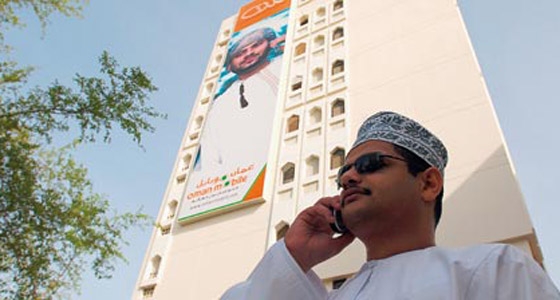The IT sector in Oman looks set to continue expanding on the back of a sharp rise in broadband and mobile phone take-up, together with falling costs across several services. However, while competition in the industry remains fierce, Oman is still struggling to close the gap on a number of its regional neighbors that are edging the Sultanate when it comes to innovation.
Oman maintained its position in the annual Global Information Technology Report 2013, which assesses a nation’s IT infrastructure, usage, affordability and socio-economic impacts, issued in early April by the World Economic Forum (WEF). The Sultanate once again placed 40th out of 144 countries, ranking fifth in the Middle East and North Africa region.
The WEF said Oman had notched up “notable successes” during the past 12 months. In particular, it cited a move among mobile phone operators to almost halve their tariffs last year, which had improved affordability for customers, alongside a drop in Oman’s broadband costs. The report said the Sultanate’s mobile broadband penetration rates nearly doubled over the year. It also highlighted mobile phone subscription rates, which edged towards 200%, putting them among the highest in the world.
However, while Oman maintained its 40th position on the WEF list, a number of other countries in the region shifted up the ladder. Qatar and the UAE both jumped five places, to 23rd and 25th, respectively, while Saudi Arabia moved up three notches to 31st , suggesting that despite its progress last year, some of Oman’s neighbors are developing at a faster place in the rapidly-evolving IT sector.
This could change in the future, however: a high-speed fiber optic cable network, which is being developed by Muscat’s utilities supplier, Haya Water, should act as a key driver in boosting Oman’s ratings in the years to come. The cable will be laid alongside the new wastewater pipeline grid that the utility plans to roll out and is expected to bolster economic activity in Muscat by providing most of the city with fiber optic access. It could also give hardware providers an opening to sell technology capable of best utilizing the high-speed services that fiber optic access offers.
Oman Telecommunications Company (Omantel) has already signaled its interest in acquiring the right to use the cable network for providing communications services throughout the capital, announcing in mid-April that it had begun talks with Haya Water and the IT sector’s governing agency, the Telecommunications Regulatory Authority (TRA), on the subject.
The firm’s chief operating officer, Samy Al Ghassany, acknowledged that with most of the infrastructure already in place, a lease option would be the most cost effective option for Omantel. “Instead of investing in fiber optic cable, we want to rent it from Haya,” he said.
Oman’s other telecommunications service provider, Nawras, has already worked with Haya, running trials of small-area networks as far back as 2011. The firm is now said to be in discussions with the utility provider in a bid to gain access to the full network.
Utilising Haya’s in-ground grid would certainly ease the companies’ infrastructure costs, which is a key issue for both outfits, especially Nawras. The provider cited rising expenditure on modernizing and extending its infrastructure and technology base as the main reason for lower earnings in the first quarter of 2013. Net profits fell 21% year-on-year (y-o-y) for the first three months of 2012, down to $20m from $25.5m, despite a 3% increase in revenue, the company said in a statement issued at the end of April.
Kanaga Sundar, the head of research at Gulf Baader Capital Markets, said Nawras would likely continue to show returns below its potential in the coming months. “Capital expenditure is expected to be high this year, so 2013 will be a challenging period even with mobile penetration and data revenue increasing,” Sundar told Reuters in late April.
While market leader Omantel has yet to release its first quarter 2013 results, the firm’s profits fell 10% in the fourth quarter of 2012 over the same period last year. However, profits for the year rose by 4.1% to reach $301m. Like Nawras, Omantel pointed to the heavy investment made to improve performance as the main reason for its higher expenses.
With the domestic market increasingly tight and earnings from some services such as international calls and SMS messaging falling, both firms are now expected to focus their attention on reducing costs. Plans to expand the fiber optic coverage to other centers, which are currently under discussion, could signal significant benefits for Oman, helping to strengthen its IT spine and, in turn, raise the country’s WEF standing.
Oxford Business Group
31 May























































